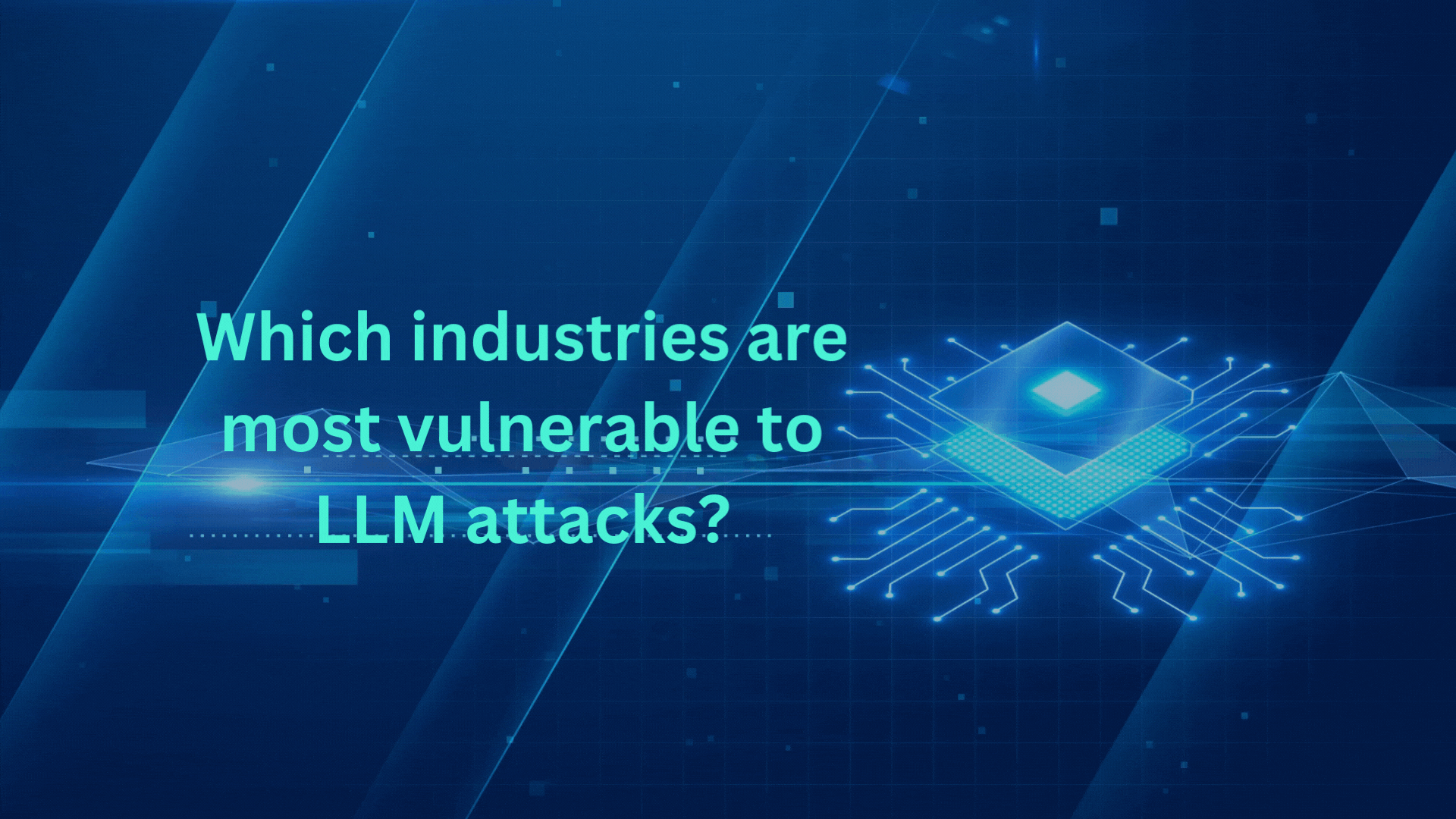Which Industries are most vulnerable to LLM attacks?

Industries that rely heavily on large amounts of sensitive data and advanced machine learning models, including large language models (LLMs), are particularly vulnerable to LLM-based cyberattacks. Here are the industries most at risk:
1. Finance and Banking
Vulnerability: Financial institutions use AI and LLMs for fraud detection, customer service (e.g., chatbots), and algorithmic trading. These systems process sensitive financial information, making them prime targets for adversarial attacks.
Risks:
- Manipulation of financial data through adversarial inputs.
- Exploitation of LLMs in customer service systems for social engineering attacks.
- Breach of proprietary financial algorithms.
2. Healthcare
Vulnerability: Healthcare organizations use AI/LLMs for patient data management, diagnostics, and predictive analytics. The sensitivity of health records and the increasing use of AI for medical decision-making make this sector a high-risk target.
Risks:
- Data poisoning attacks that could manipulate diagnoses.
- Exploiting LLMs in telemedicine or health chatbots to gain access to sensitive patient data.
- Breach of health records and regulatory violations (HIPAA, GDPR).
3. Government and Defense
Vulnerability: Governments and defense agencies rely on LLMs for decision-making, intelligence analysis, and communication systems. These models often handle classified information and critical infrastructure data.
Risks:
- Adversarial manipulation of intelligence analysis or decision-making algorithms.
- Exploitation of LLMs used in military or defense communications.
- Insertion of backdoors in AI systems for cyber espionage.
4. Manufacturing and Industrial Control Systems (ICS)
Vulnerabilities Industrial sectors use AI-driven systems for automation, predictive maintenance, and optimizing operations. Attacks on LLMs can disrupt production, supply chain management, and operational efficiency.
Risks:
- Adversarial inputs that cause physical systems to malfunction (e.g., robotic arms or control systems).
- Manipulation of predictive maintenance algorithms to mislead operations.
- Sabotage of production schedules and manufacturing quality control.
Protecting IT, IIoT, and OT Environments with ACS
5. Energy and Utilities
Vulnerabilities: Water treatment plants, power grids, and other utilities use AI and LLMs for predictive analysis, energy distribution, and security monitoring. Compromising these systems can lead to massive infrastructure failures.
Risks:
- Manipulation of energy distribution algorithms.
- Disrupting grid management systems through adversarial attacks.
- Threats to critical infrastructure, such as power outages or water supply disruption.
6. Telecommunications
Vulnerabilities: Telecom companies use LLMs for customer service automation, network management, and predictive traffic analysis. Attacks on these systems can disrupt communications and compromise data privacy.
Risks:
- Exploiting AI-driven customer service systems for social engineering or phishing attacks.
- Adversarial attacks leading to mismanagement of network traffic, causing disruptions.
- Breach of customer data through chatbots or automated services.
7. Retail and E-commerce
Vulnerabilities: Retailers use AI and LLMs for customer experience personalization, inventory management, and dynamic pricing. A compromised system could lead to financial loss, inventory errors, or customer dissatisfaction.
Risks:
- Adversarial attacks causing mispricing or stock mismanagement.
- Manipulation of recommendation engines, leading to financial loss.
- Social engineering attacks through customer service chatbots.
8. Pharmaceuticals and Biotechnology
Vulnerabilities: The pharmaceutical industry uses LLMs for drug discovery, research, and patient communication. Manipulating these models could lead to compromised research outcomes or incorrect medical guidance.
Risks:
- Misleading AI in drug discovery, affecting research results.
- Manipulation of patient health recommendations or clinical trial data.
- Data breaches involving proprietary research or patient medical information.
9. Education and Research
Vulnerabilities: Educational institutions and research organizations use LLMs for grading, research assistance, and content generation. These sectors handle vast amounts of student data and proprietary research.
Risks:
- Adversarial manipulation of grading systems or research outputs.
- Phishing and social engineering attacks through AI-driven educational tools.
- Breach of sensitive academic or research data.
10. Media and Entertainment
Vulnerabilities: Media companies increasingly use AI for content generation, recommendation algorithms, and customer interaction. Attacks can exploit these models for misinformation or disruption of services.
Risks:
- Manipulation of recommendation algorithms to promote disinformation or inappropriate content.
- Exploiting content generation tools to create misleading news or media.
- Social engineering attacks via AI-driven customer service systems.
Each of these industries has significant dependencies on AI and machine learning models, which makes them prime targets for adversarial attacks, particularly in the form of LLM-based threats. Securing these systems with solutions like rML is critical to ensuring the integrity and functionality of mission-critical applications. To learn more about rMLS book time with Founder and CEO, Garry Drummond.
